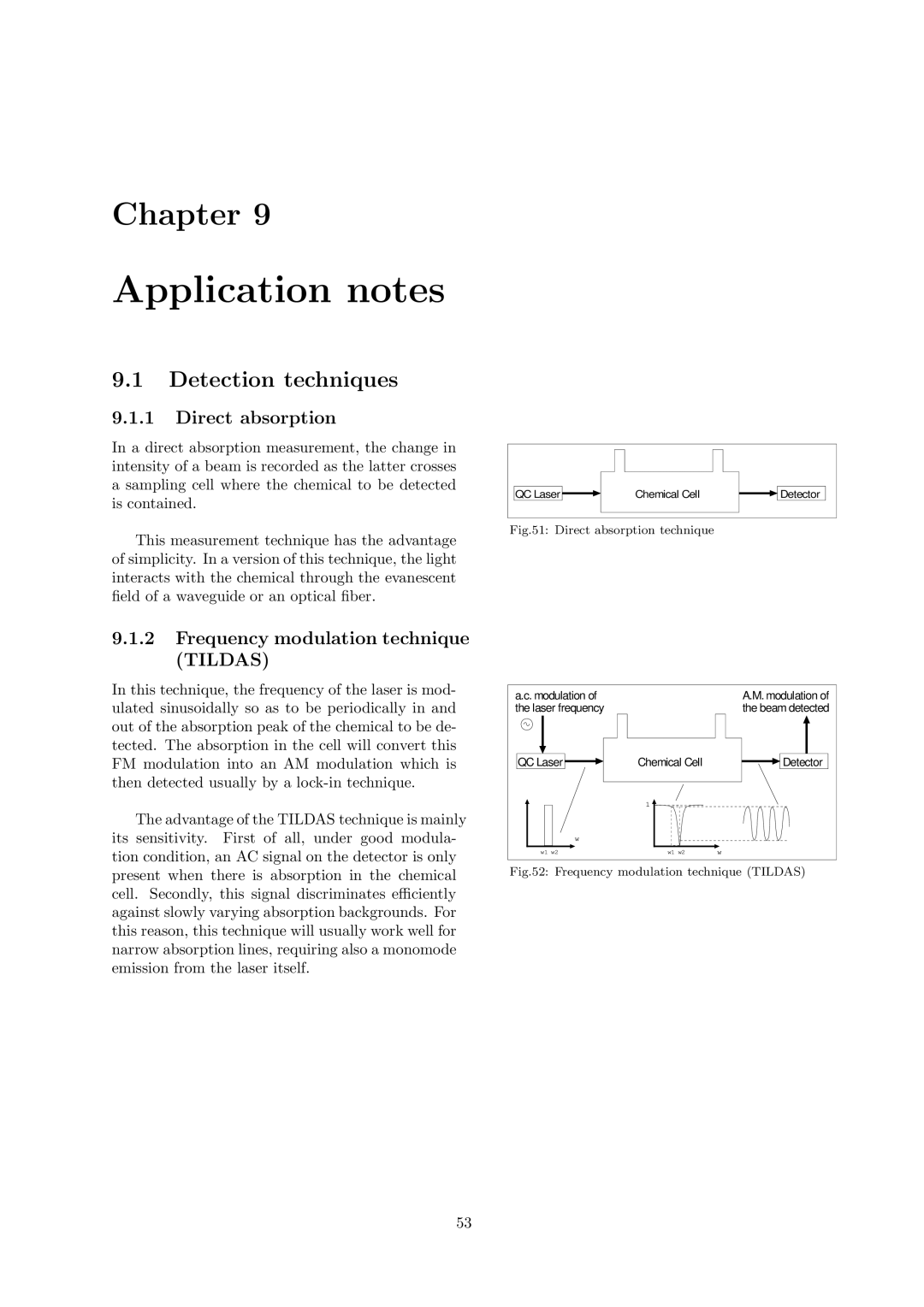
Chapter 9
Application notes
9.1Detection techniques
9.1.1Direct absorption
In a direct absorption measurement, the change in intensity of a beam is recorded as the latter crosses a sampling cell where the chemical to be detected is contained.
This measurement technique has the advantage of simplicity. In a version of this technique, the light interacts with the chemical through the evanescent field of a waveguide or an optical fiber.
|
|
|
|
|
|
|
|
|
|
|
|
|
|
|
|
|
|
|
|
|
|
|
|
|
|
|
|
|
|
|
|
|
| QC Laser |
|
|
| Chemical Cell |
| Detector |
| ||
|
|
|
|
|
|
|
|
|
|
|
|
|
|
|
|
|
|
|
|
|
|
Fig.51: Direct absorption technique
9.1.2Frequency modulation technique (TILDAS)
In this technique, the frequency of the laser is mod- ulated sinusoidally so as to be periodically in and out of the absorption peak of the chemical to be de- tected. The absorption in the cell will convert this FM modulation into an AM modulation which is then detected usually by a
The advantage of the TILDAS technique is mainly its sensitivity. First of all, under good modula- tion condition, an AC signal on the detector is only present when there is absorption in the chemical cell. Secondly, this signal discriminates efficiently against slowly varying absorption backgrounds. For this reason, this technique will usually work well for narrow absorption lines, requiring also a monomode emission from the laser itself.
a.c. modulation of |
| A.M. modulation of |
the laser frequency |
| the beam detected |
QC Laser | Chemical Cell | Detector |
| 1 |
|
w |
|
|
w1 w2 | w1 w2 | w |
Fig.52: Frequency modulation technique (TILDAS)
53
